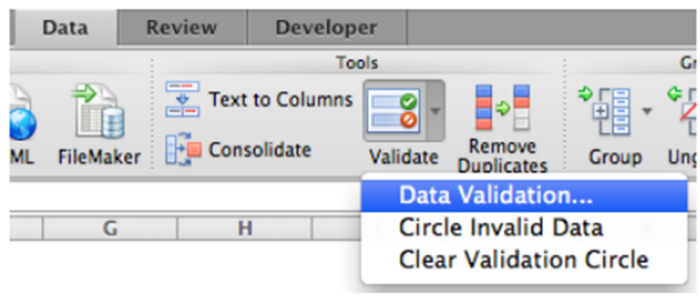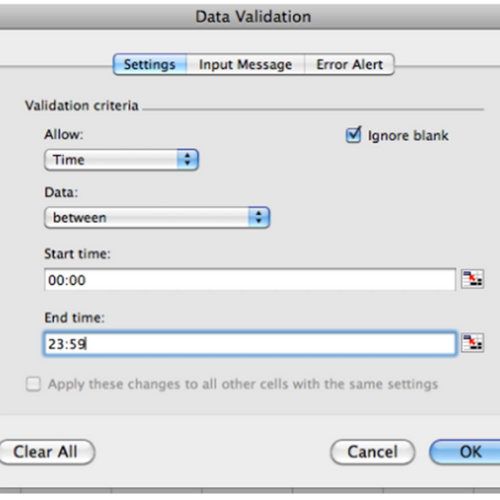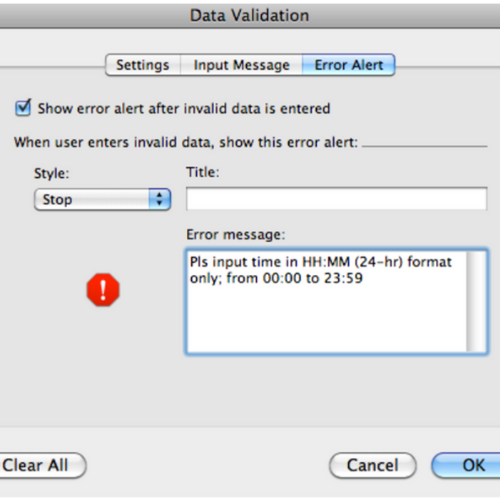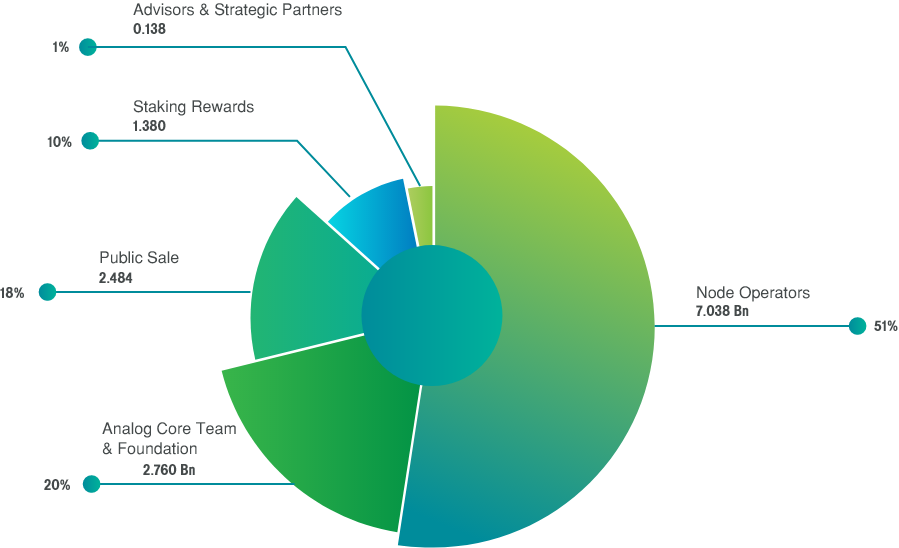How does Analog’s Proof-of-Time consensus mechanism work?
Analog introduced the blockchain industry to the concept of a unique consensus mechanism called the Proof-of-Time (PoT). Proof-of-Time (PoT) is a consensus mechanism unique to Analog, a blockchain startup that is committed to using it to develop a one-of-a-kind time data-based network. Analog operates with a mission to “create the world’s first blockchain-powered Time graph. The Timegraph is a searchable resource of validated time data that is of incredible value to individuals and an array of industries and can be used to power apps. PoT enables a system of causality and ensures that what came before and what came after would be impossible to amend. The time data from participants or nodes that comes in is first validated and then hashed. The time data essentially constitutes the building blocks of a blockchain network utilizing the PoT consensus mechanism. Numerous consensus mechanisms have been in existence since the inception of the blockchain industry. These include Proof-of-Work (PoW) and Proof-of-Stake (PoS). The former requires substantial computing power and the latter relies on the amount of stake, such as the total number of coins that a participant holds.
With Analog’s sophisticated Proof-of-Time (PoT) consensus algorithm any user on a network can become a node and participate in verifying time data. Analog aims to employ the time data-based network to cut through the clutter of misinformation that might be inherently present in the historical records and present the users with an accurate and factual account of time data onto its network as an alternative. Nodes are selected based on several variables related to their time relevance such as weighted value and reputability.
In this guide, I have explained how the Proof-of-Time (PoT) consensus mechanism works and how the individual users and organizations can benefit from it. I have also compared PoT against the more common consensus mechanisms to evaluate the unique advantages offered by each of them and reflect on the unique value proposition of PoT.
What Does Time Data Mean?
The Proof-of-Time consensus mechanism relies on on-time data. This is a digital sequence of binary numbers that a trusted entity generates and makes available to the general public at certain points in time. The most famous example of such a sequence is the Coordinated Universal Time. Let’s talk about what time data means, how it works, and why it can’t be manipulated by actors in the network.
The Proof-of-Time consensus mechanism is predicated on time being a scarce and therefore, valuable resource. Unlike other cryptocurrencies such as Bitcoin, Ethereum, and Litecoin, where the entire ecosystem relies on nodes depending on the cyclical nature of computing (i.e. how much hash rate a node can contribute), we propose a more democratic system that does not benefit handlers with fast computers.
Analog’s consensus mechanism, Proof-of-Time, is based on the assumption that processing a certain amount of data takes a certain amount of time.
As of now, Proof-of-Time is a trustless and decentralized consensus mechanism, where the time is proved by the laws of physics. Each round has a pinned duration.
The network defines the current time by maintaining an ever-increasing counter, the TimeLog. Like other blockchain protocols, Analog relies on a consensus protocol to ensure that all nodes agree on the time. We chose the $pi$ constant as our PoT because, like time itself, it cannot be recreated artificially. Proof-of-Time (PoT) is a consensus mechanism that requires participants to commit to the call of a source of time in a publicly verifiable way. PoT is designed to be a secure and decentralized alternative to Proof-of-Stake (PoS) and Proof-of-Work (PoW).
Instead of cryptographically “fuzzy computing” like traditional consensus mechanisms (which are often susceptible to manipulation from actors in the network), PoT works by comparing timestamps from participating devices with a single trusted clock. By literally proving elapsed time, PoT is fair, safe, and easy to understand — it’s a simple algorithm that is resistant to manipulation.
Time data is incredibly difficult to tamper with because it can easily be verified and cross-referenced. Analog’s Proof-of-Time consensus mechanism builds on this, using the time-based data generated by the usage of IoT devices (potentially billions of these) to verify the correctness of this time-based blockchain. Proof-of-Time is a novel consensus mechanism that uses the power of precise time to create a trustless system. The protocol allows users to rely heavily on time, without any way for this information to be spoofed or manipulated by bad actors in the network.
Why Do You Need Proof-of-Time (PoT)
An interesting aspect of blockchain technology is the decentralized consensus-building achieved by the application of various consensus mechanisms such as Proof of Work (PoW), Proof of Stake (PoS) or Delegated Proof of Stake (DPoS). All these mechanisms aim at ensuring that participants dispose of identical copies of the distributed database files. The question that arises now is: Why do you need Proof-of-Time (PoT) as a consensus mechanism?
Analog’s Proof-of-Time (PoT) consensus mechanism focuses on harnessing time on the blockchain and focuses on solving times as a problem. When using PoT, people get rewards for being active in the IoT space. The more active you are, the more rewards you get. Analog’s Proof-of-Time (PoT) consensus mechanism focuses on harnessing time, the most abundant resource in the world. In fact, Analog’s consensus mechanism, PoT, focuses on harnessing time as a solution to the problem of true-time on the blockchain. Unlike Proof-of-Work (PoW) and Proof-of-Stake (PoS), which solely focus on processing power and computational puzzles, PoT harnesses a global network of nodes. These nodes are able to confirm the timing of transactions via the NIST time-keeping protocol.
The concept of time is pivotal to our existence. Analog began with a mission to develop a consistent and consensus-driven definition or a reliable means of measuring and documenting the passing of time. Time exists as a casual chain and the advent of any particular instance leads directly and subsequently to the next. According to the corollary of this principle, an effect cannot occur from a cause that is not already in the past. This means that any specific event has casual factors all of which exist in the past and will have their own effects, all resting in the future. This characteristic of time makes it suitable to be recorded for posterity on the blockchain, i.e. the technology that by definition leverages the power of consensus to record data permanently and securely in a sequential fashion.
The realization that time is both very difficult and very important to record and monitor led to the birth of the Analog. Analog creates a system for participants to accede to a single history by leveraging the causality of hash chains and the unpredictability of proof of time. The Proof-of-Time (PoT) consensus mechanism provides a mechanism for establishing an indisputable history of events. With causality, what came before and what came after is impossible to alter.
Analog plans to create a mechanism through which Oracles can vote and confirm the real-world time data being submitted. Analog’s indexable and searchable Timegraph works similar to bitcoin where new blocks are added above the previously created ones in a first in last out mechanism. Analog plans to get rid of the major bottleneck of time data management not just for data-intensive applications but also for users.
Proof-of-Time (PoT) consensus mechanism allows people to search and visualize the real-time history of the other time events, referred to as “Analogs”, that have occurred before any particular event. This allows users to collate any gaps in the time information. For example, if someone searched “how Christina Bruck” secured a job at a particular firm, they would be able to review the stream of Analogs that occurred over Christina Bruck’s lifetime that led her to this current position of hers. These Analogs could include her birthplace, the name of the college in which she studied, her past history employment history, and more.
Thus, users can particularly benefit from the advantages of real-time events, as the Analog network treats each participant as a node in its Timegraph, submitting time data to the blockchain for validation from randomly selected nodes in the vicinity. These features transcend beyond the definition of just a blockchain network to an app that enables organizations, business owners, and individuals to feed time data for a variety of things. Analog seeks to satisfy the innate human curiosity of “when” something is happening and allows people to connect through the lens of time. Analog has the perspective of the world is a time automated place where Analog saves as a ‘proof of time’.
Once people start surfacing time, they can actually do a lot with it like getting people to perform a call-to-action within a predefined period. Timely action can be the key differentiator between a life and death situation. For example, The Champlain South Towers accident could have been avoided and lives could have been saved if we had the preceding time data in the Analog graph.
Analog is tying up money with time in the form of rewards using their native token. Money is mostly perceived by society to be their most valuable resource. Analog aims to merge money (a tangible asset) with time (an intangible one). This would help people deploy a time graph of every event.
Use Cases
The core mission of analog is to accurately record time data by leveraging the Oracle to track, log and verify real-world information on the blockchain in the form of a time graph. To accomplish this goal Analog is preparing solutions to some of the common problems associated with time, across various industry verticals.
Analog’s Timegraph API is an on-chain aggregated database of real-world time information submitted by nodes and works as an immutable and uncensorable version of history. It has a flexible nature, is searchable and filterable, and thereby has the potential for an array of use cases. Let’s have a look at some of the use cases:
The busy scheduling or inattention can lead to missed bill or credit card payments, resulting in additional expenses, reduced credit ratings, and service cancellations. Analog enables the more seamless functioning of markets using time data from a decentralized, trustless network. Through smart contracts, Analog cab even supports financial applications to facilitate the creation of decentralized lending systems and incentivized stacking and liquidity pools.
Poor scheduling and time management results in delayed check-ins due to unprepared rooms, untimely inappropriate and cancellation of late guests’ reservations, and housekeeping coinciding with the guests’ usage of their rooms.
The Timegraph API of Analog allows for communication and coordination between the hospitality provider, guests, internal services (housekeeping, front desk), and third parties (airlines, airports, etc.) to minimize scheduling-related issues.
Influencers must follow the updates, promotions, and collaborations from numerous high-profile brands, this allows them to stay relevant. With multiple brands and media platforms being utilized, tracking all salient information and timelines can be difficult.
The Timegraph API of Analog incentivizes all parties to feed time data into a graph, whenever a new event (such as a new collaboration announcement or a product launch) happens. Moreover, consumers are incentivized to contribute towards the Timegraph by posting personal content like reviews and feedback, on the platform, and linking it to the brand.
Organizational success is underpinned by timely delivery of work. Delays and pushed timelines result in poor performance. This can cause the clients to leave and can lead to a reduced bottom line. Organizations of all sizes typically struggle to implement and monitor performance metrics designed to reduce tardiness.
Analog can power a Dapp that incentivizes employees via token rewards administered by a smart contract-managed system of rules, alerts, and reminders that rewards timely behaviors and penalize lateness. The performance of individuals can be tracked, recorded, and measured based on token incentives and the progress reports and metrics can be extracted from the Timegraph.
- Construction and Maintenance
The buildings and other infrastructures must be renovated on time. Delays can lead to structural damage or even collapse like the Surfside Condominium in July 2021.
Analog has identified six parties that accorded to the collapse of the building. These include the original building contractors, condo inhabitants, insurance companies, eyewitnesses, renovation consultants, and city government officials.
Theoretically, if time was tracked and events were accurately recorded, the collapse could have been avoided and 98 lives could have been saved.
Analog Timegraph API can be utilized to incentivize via token rewards the submission of time data and via smart contracts initiated warnings and alerts that result in remedial action that ultimately prevented the structural collapse.
- Shipping or Delivery Services
High volume sales around peak times such as Christmas can result in order backlogs for online retailers and delivery services. This can delay the deliverables and provide poor visibility for customers on the status of packages and even on canceled orders.
With the use of Analog’s Timegraph API, these delays can be reduced by allowing e-retailers to reward 3rd party suppliers with tokens and can allow for greater visibility of package delivery status by users to follow the supplier’s supply chain and inventory system in real-time. A Timegraph is an on-chain aggregated database of real-world time information submitted by nodes that functions as an immutable and uncensorable version of history. It has a flexible nature as it is searchable and filterable, thereby having the potential for a variety of use cases.
The Analog Timegraph API can be simply described as the frontend to the Timegraph’s backend. It is an interface that helps in interacting with complex data on the Timegraph. Analog’s Timegraph API uses a privacy-enabled, recursive, zero-knowledge proof protocol (Zero-Knowledge Succinct Non-Interactive Argument of Knowledge or zk-SNARK) that allows the transfer of time data cross-chain and bidirectionally between applications without compromising the underlying time data itself.
With Proof-of-Time Consensus developers can build dApps around time specifically. Decentralized applications (or DApps) are applications that do not rely on a centralized backend running in AWS or Azure that power traditional web and mobile applications (outside of hosting the frontend code itself). The application interacts directly with blockchain which can be considered to be a distributed cluster of nodes analogous to applications interacting directly with a “masterless” cluster of Cassandra nodes with full replication on every peer in a peer-to-peer network.
How Actually does the Proof-of-Time Consensus Mechanism Work?
The Proof-of-Time consensus on Analog enables anyone in the network to be a part of it by becoming a node and participating in time data validation. The process of selecting the validators involves variables such as time relevance, weighted value, and reputability.
Proof of work mechanisms enshrine data permanently on-chain, and all the validators spend a considerable amount of time and money to arrive at a consensus on the version of ‘truth’ to be recorded. The costs expanded to give the cost its value in the same manner that bitcoin as money derives its value from the time and energy expended to mine it. The mechanism makes time data recorded on-chain credible, having derived from numerous independent stakeholders having provided their proof of validation. The linear, immutable, and uncensorable properties of blockchain make it an ideal (and first) technology able to comprehensively record time in a searchable, sortable and trustworthy manner.
Validation of Time Data
To minimize the instances of human error with the validation of time data, the following steps should be employed:
Select the range of cells you want to limit user input, then go to Data Tab –> Validate –> Data Validation.

On the Settings Tab,
- Allow: Time
- Data: between
- Start time: 00:00
- End time: 23:59

2.) Then go to the Error Alert tab where you can set the pop-up message when invalid data is fed
- Ensure the “Show error alert…” is checked
- Style: Stop (to enforce user to input only the validated data: if you select other options, you leave room for the user to input any value)
- Title: Your title
- Message: Your Message
- Click Ok

3.) Done. Now if the input is incorrect say 8.5, excel wouldn’t accept the input and will give you an error message.

This data validation technique would work for manual inputs only though.
How Analog Functions?
Time nodes consisting of individuals, organizations, software programs, and IoT devices, post time data to the Timegraph. Thus, in return, the time data is extracted and received. This time data, on occasion, needs to go through several Oracles to be authenticated.
Analog essentially functions as a hub for time nodes to submit the time data. It then normalizes the data and employs a prover program to translate it. The data is then encrypted (SHA – 256) and pushed through a validator before entering the Timechain and interacting with the nodes that have the permission to pull that time data.
As Analog only facilitates the authentication and transfer of time data to other dApps, unlike centralized systems like Facebook and Google, the time data is never stored in a database. The inclusion of the zk-SNARK proof protocol ensures that only relevant time data is utilized at pertinent points, ensuring that user privacy is maintained and sensitive information is never exposed.
Here’s an example of how Analog functions. A building contractor is tasked to perform renovations to the pool deck area of an apartment block must create reminders for himself to get the job done in a timely manner.
He asks his assistant to bring the job up at the next Homeowner Association (HOA) meeting. The HOA validates this time data request before keying it into the building management software system (dApp), which is linked to Analog through the use of Oracles. This software has a smart contract installed that will send the time data to the Timechain. It’s set to remind the building contractor continuously until he finishes the renovation task (thus completing the call to action). Once the HOA confirms the job is done, he’ll receive his incentive, namely an ANALOG token reward.
Neither the contractor nor the HOA actually gets to access the time data, as their interaction is limited to end-user options of what’s presented in the dApp’s UI. In yet another example, a delivery driver looking to deliver a package sent by Mary Jane to John Doe would be able to see in his Analog-supported delivery management app whether he should attempt delivery as John Doe may not be able to be at home to receive it.
The app would be able to determine via John Doe’s submission of time data, if he is at home or away – perhaps on an engagement until 3 pm or on vacation until the weekend. The delivery driver won’t know what John Doe is up to, because all he would see are ‘deliver’ or ‘don’t deliver’ options on the app.
A use case of how Timegraph could be applied is the Surfside condo collapse in July 2021. Investigations into the tragedy revealed proper maintenance was a major contributing factor to the building’s structural failure.
Analog’s Timegraph API could have been used to incentivize the maintenance crew to perform crucial maintenance and submit time data as proof while informing relevant parties such as residents and local authorities of the status of the works (which implies the structural health of a building as well).
The Analog Network is the combination of participating community members and technical mechanisms that drive both Analog and the Timegraph. The ecosystem consists of time nodes, oracles, smart contracts, dapps, DEX, end-users, and staking mechanisms. All these factors revolve around time data that is protected by the zk-SNARK zero-knowledge proof protocol.
Analog has developed a mobile app that allows the community to submit useful data into the Timechain easily. Users can create updates, or ‘Analogs’, using apps visible to relevant parties and searches. Entering specific keywords in the app search field would bring up relevant real-time Analogs based on the searcher’s location and other unique factors.
The app also pulls in relevant time data from relevant third-party apps such as calendar schedules, upcoming local event calendars, and monthly billing information. The app helps users take preemptive time-based actions. This saves a lot of time as several other apps are not accessed.
Also, users can select many external apps and what information they want to sync with Analog, providing them with tailor-made solutions to conveniently track the singular and recurring details from their daily schedules.
Analog has also prepared a wallet to allow users to store ANLOG with support for more tokens soon. Analog also plans to build a DEX to allow users a chance to provide liquidity, stake, and swamp tokens to get ANLOG rewards. The DEX is built-in trustless manner meaning that users’ funds and personal data are preserved.
The Analog network will initially leverage an ERC-20 token (ANLOG) to incentivize and coordinate desired behaviors by nodes, consumers, and stakes. ANLOG can be publicly traded from Q4 2021 or used by the network participants to pay for the time-bound call-to-actions. A total supply of 13.800 billion ANLOG will be distributed as per the following schedule:


Nodes: Nodes are rewarded with 51% of the ANLOG supply for proactivity in participating in the network. Rewards are tied to the nodes ‘time relevancy’ score which individual nodes can improve by increasing their productivity – increasing time relevancy leads to an increased share of rewards.
Core Team & Foundation: 20% of the supply is reserved for the core Analog team and the Analog One Foundation, a non-profit organization inclined to develop and maintain the network.
Public Sale: To facilitate fundraising and public adoption of ANLOG, 18% of the supply needs to be distributed via public sale.
Staking Rewards: 10% of supply is allocated to fund staking rewards Advisors & Strategic Partners: 1% of the supply is allocated to our advisors and strategic partners, with a 6 year vesting period.
Components of Analog
Analog is initially built on the Proof of Work Ethereum client. The privacy of time transactions is protected by customizing Hyperledger Besu and Orion transaction manager with the privacy group feature. The Orion privacy group ID, however, is protected by default and current versions of Hyperledger Besu and Orion fail to provide necessary features for securing the entire Decentralized Application (DApp), including key management and intrusion detection.
Oracles
Oracles support the validation, access, and transmission of time data from external sources and form a critical component of the Analog ecosystem. The oracle framework addresses the origin of time data from external sources. The oracle framework addresses the origin of time data, properties, and encryption methodology to secure the data source as well as facilitating other developers to integrate the Analog system into their applications.
Staking
ANLOG tokens can be staked to help secure the network, in return for in-kind staking rewards. Staking rewards account for 50% of the total rewards pool.
Nodes
‘Nodes’ refer to the participant within the Analog ecosystem with the ability to submit time data to the Analog ledger. Anyone can act as a node, whether individuals, organizations, or commercial enterprises. Nodes are rewarded for submitting time data to the network with ANLOG rewards. The extent of rewards is based on a Timegraph relevancy score determined by productivity within the network, thus incentivizing nodes to participate proactively. Moreover, users will also have Web3 and mobile access to the Analog Wallet enabling them to store and manage their ANLOG tokens including the ability to stake and transact directly from the wallet interface.
One of the major features of Analog is the zero-knowledge proof protocol. Analog uses the zk-SNARK proof protocol that allows the transfer of time data cross-chain and bi-directionally between applications without compromising the underlying time data itself. This, in turn, reveals that sensitive data is never revealed.
Analog essentially is community-driven. This means that Analog has a consensus mechanism and governance system that allows its community members a chance to voice their opinions and become a part of the system. Additionally, Analog also provides a developer-friendly ecosystem that allows them to write smart contracts and dApps in any programming language of their choice as long as it compiles with WebAssembly.
How Consensus Works for Alternative Mechanisms
- Proof-of-Work (PoW) – PoW is a decentralized consensus mechanism that requires members to solve some tough computational problems to prevent others from tapping into the system. This technique is quite widespread in cryptocurrency mining and for validating transactions and mining new tokens. The validation of transactions occurs through local copies of blocks at each node. The difficulty of the task is adaptable so that a single block is created every 10 minutes within the entire network.
- Proof-of-History (PoH) – Proof of History (PoH) is proof for verifying the order and passage of time between events. PoH can be employed to encode the trustless passage of time into a ledger and append-only data structures.
Proof of History is a sequence of computation that cryptographically verifies the passage of time between two past events. A cryptographically secure function must be written in a way that output cannot be predicted from input and must be executed completely to generate the output. The function is run in sequence with a single core and the previous output should be used as the current input.
Even the data can be time stamped into this sequence by appending the data (or a hash of some data) into the state of function. The recording of state, index, and data provides a timestamp that ensures that data came into existence sometime before the next hash was generated in sequence. As multiple generators work in tandem, the design also ensures horizontal scaling.
3. Proof-of-stake (PoS) is a cryptocurrency consensus mechanism for processing transactions and creating new blocks. A consensus mechanism is a technique for validating entries into the distributed database to keep the database secure. This mechanism is used to validate cryptocurrency transactions.
Wrap Up
There are several ways decentralized networks accede to a single source of truth. The blockchain sector continues to diversify and Analog’s timegraph is the latest addition.
Analog creates a system for participants to accede on a single history by utilizing the causality of hash chains and the unprecedented case with proof-of-time (PoT); Analog network provides a mechanism for establishing an indisputable history of events. The aim of Analog to develop a unique Timegraph network speaks of a vision of creating a world where time data communicates with other time data to make life easier for people without compromising on privacy.
The network of Analog offers versatility in solving problems across numerous verticals ranging from education, healthcare, gaming, retail, and construction to government, environment, supply chain, and finance. The community is home to developers, technologists, libertarians, users, validators, token holders (HODLers), and enthusiasts across the globe and is only expected to grow.
Author’s Bio:

Priya has about 7 years of experience in Market Research. Currently, she is working for Valasys Media, as a content writer, which is amongst the top B2B Media Publishers across the globe. She has been preparing several personalized reports for our clients & has done a lot of research on market segmentation, cluster analysis of audiences & inbound methodologies. She has worked with government institutes as well as corporate houses in several projects. She possesses various interests and believes in a data-driven approach to problem-solving. She holds a post-graduation in science and also writes extensively on all things about life besides marketing, science, data science- , and statistics. She is a firm believer in higher realities and that there’s always more to life than we understand. She is a psychic healer and a tarot practitioner, who believes in a spiritual way of living and practices Yoga and meditation. When not writing you can find her enjoying music or cooking.
Looking for help here?
Connect with Our Expert for
a detailed discussion
Post Views: 4
